Mexico. Interoceanic Corridor of the Isthmus of Tehuantepec. A great logistic hub.
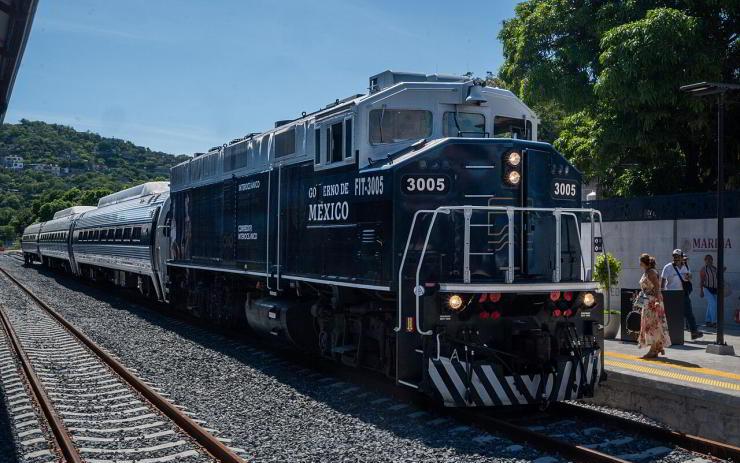
The Interoceanic Corridor of the Isthmus of Tehuantepec linking the Gulf of Mexico to the Pacific Ocean, will interconnect the two oceans. The main intent is to enhance the geographical position of the Isthmus to better compete in the logistics and mobility of goods.
The current historical phase is characterized by a constant and growing redefinition of geopolitical balances on a global scale of which transport infrastructures are an essential part. The changes underway show us that the destinies of the world will be conditioned by the trajectory of territorial and positional advantages enjoyed by the various powers.
As Parag Khanna, an Indian-born strategy advisor, highlights, the nature of geopolitical competition has as its object both horizontal and vertical control of global value chains.
In fact, in the last fifteen years, various countries or areas of the globe have expressed their infrastructural system projects, characterized by a well-defined and competitive geopolitical vision.
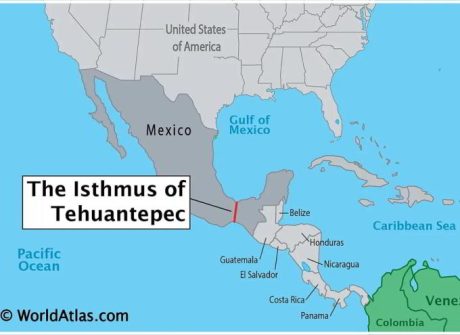
Consider, in this regard, the European TEN-T project and the Chinese Silk Road that has caused so much clamour, as well as the IMEC (India Middle East Europe) corridor, the Russian Razvitie project, the North African connection systems and the Initiative for the Integration of South American Regional Infrastructure (IIRSA). The latter, in particular, includes a series of connection projects that cross the entire southern region of the American continent, from north to south and from the Atlantic to the Pacific, the construction of which is proceeding despite political upheavals, regional crises and the sudden redefinition of internal balances. In addition to the regional corridors, inherent to the IIRSA projects, the various Latin American countries are also working individually to develop their infrastructure systems. This is the case of Panama as well as the Dominican Republic, which have exploited their positioning to convert themselves into real logistics hubs, to make their territories attractive and competitive.
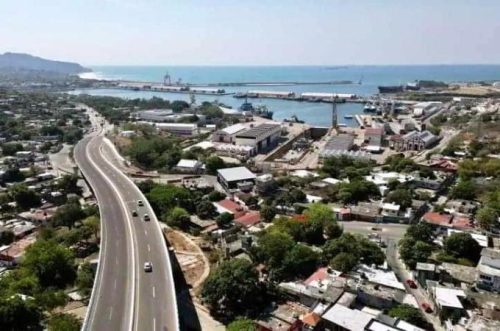
The port of Salina Cruz, Oaxaca, is on the western side of the Isthmus of Tehuantepec. (Government of Oaxaca/Twitter)
Mexico also intends to operate in this direction through a series of connection projects, as ambitious as they are revolutionary and which concern the southern part of the country, the construction of which would determine a new course in the geopolitics of transport on a global scale. The backbone on which this development project is based is the Interoceanic Corridor of the Isthmus of Tehuantepec, which, by linking the Gulf of Mexico to the Pacific Ocean, will interconnect the two oceans. The main purpose of this axis is to enhance the geographical position of the Isthmus to better compete in the logistics and mobility of goods, as well as to territorially reconfigure the southern area of the country which, in addition to being well positioned, is rich in resources.
An alternative to the Panama Canal
It is estimated that the Corridor should handle 300,000 tons of material and merchandise every day that would travel on high-speed electric trains. More specifically, this axis, 150 km long, will consist of two lines of railway tracks, flanked by highways, that will connect the ports of De Coatzacoalcos (Veracruz) and Salina Cruz (Oaxaca) in just 3 hours. This would be a valid alternative to the Panama Canal given the current 8-hour crossing, with waiting times of up to 15 days. It should be added that despite recent modernization and expansion work, the Panamanian infrastructure is hit by a serious crisis caused by drought that has drastically reduced passages and therefore revenue.
The Canal, in fact, is fed by the artificial freshwater lake Gatún, through a complex engineering system of locks that function to raise or lower the water level, based on the direction of the ship, to overcome the difference in height between the Pacific and Atlantic Oceans with the former located in a higher position than the latter.
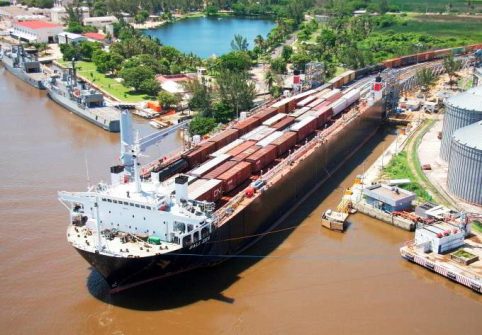
Bali Sea FerryRail. CC BY-SA 4.0/Ferrosur
A mechanism that generates a significant waste of water with the passage of each ship, in a period of climate crisis in which the resource is scarce. This criticality, whose effects have strongly impacted global logistics chains by extending the delivery times of goods, would constitute a significant disadvantage in possible competition with the Mexican infrastructure that, moving on land, could redefine the timing of the value chains.The project, in addition to connecting the two ends of the Isthmus, also intends to create a real logistics hub through the strengthening of intermodal connections aimed at interconnecting the other ports in the area, the airports and the inland areas, as well as facilitating connections with Central America.
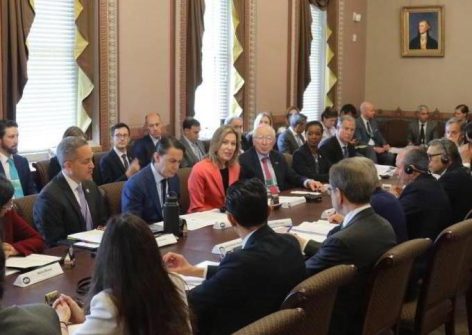
Last June, Mexico presented the Interoceanic Corridor of the Isthmus of Tehuantepec project in the U.S. (Gov.Mex.)
More specifically, the line that will connect Ixtepec to Ciudad Hidalgo will build an excellent interconnection with the Central American area and with the port of Chiapas, while the one from De Coatzacoalcos to Palenque will favour internal connections and interconnection with the Mayan train, the latter is strongly opposed because the construction of this infrastructure has entailed the expropriation of a large number of hectares of land from the local populations. In addition, the line that will connect Ixtepec to Ciudad Hidalgo will have a branch that will connect it with the port of Dos Bocas. In addition, to make the best use of existing resources and the potential for low-cost labour in an area affected by a powerful migratory flow, the construction of 10 industrial centres has been planned, as well as an energy-industrial enclave aimed at improving the export potential of the Mexican region through a powerful network of gas and oil pipelines, which will flank the rail and road transport axes, useful for transferring natural gas from the United States gas pipeline network to the Yucatan Peninsula, as well as Central America. This will form a complex land gas transportation network between Canada and Panama. At the same time, the installation of a natural gas liquefaction terminal in the port of Salina Cruz will facilitate the export of energy to Asia.
Attractive to China and the United States
In a phase of high competition around infrastructure assets, such as the current one, control of the southern Mexican region could reconfigure the value chains. The area, in fact, is attractive to the great powers, and in particular to China and the United States, the latter being interested in pursuing the nearshoring strategy, which has greatly increased trade with Mexico – the main commercial partner and largest exporter to the United States of America – as well as slowing the advance of the Chinese in the region. The Chinese, on the other hand, driven by US commercial pressure, have transferred to Mexico, in the last 4 years, a good part of their companies previously present on US soil.

Mexican President Claudia Sheinbaum. CC BY-SA 4.0/EneasMx
However, the recent election of Claudia Sheinbaum, the first female president of Mexico, could facilitate Sino-Mexican relations and favour the inclusion of Chinese companies in the construction of the Corridor. This worries Washington both about security aspects and the increase in competition that could arise in the infrastructure and technological fields. Added to this is the feared risk that Chinese companies could exploit Mexico as a platform to circumvent trade restrictions, maintaining preferential access to the North American market.
Such competition, moreover, if not adequately managed by the new administration could undermine the stability of the region and, as claimed by authoritative analysts, expose Mexico to losses of sovereignty of its territory, or in extreme cases to the loss of the southern part of the country as was the case of Panama with Colombia. All this is in a context already marked by strong opposition from indigenous communities and civil society who see in this project a new form of neocolonialism aimed at plundering the territories, causing huge social and environmental damage. (Open Photo: Ferrocarril del Istmo de Tehuantepec at Salina Cruz station, Oaxaca, Mexico.CC BY-SA 4.0/ProtoplasmaKid)
Filippo Romeo



